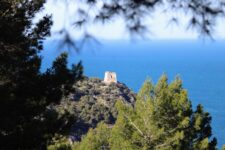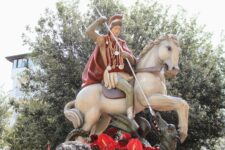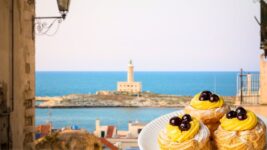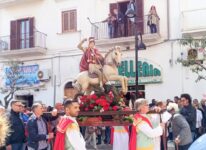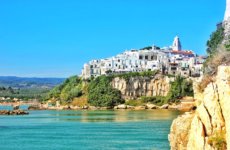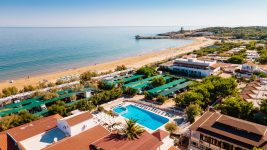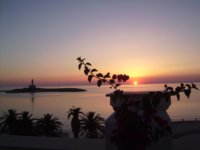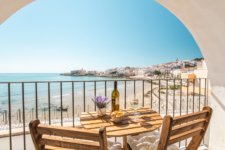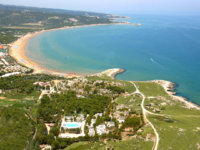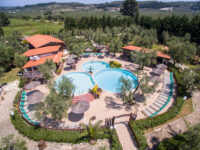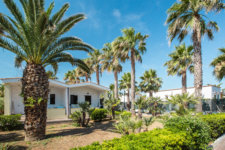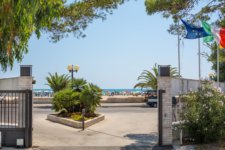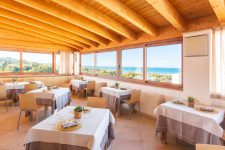Vieste, remote, lost from the world, is over there, beyond the last rocks. Soon, if fate pleases, we will see his bold profile
It is with these words that the chapter dedicated to Vieste opens in the book "Il Gargano", written by Beltramelli in 1907, which is part of the "Italia Artistica" collection.
Rich in illustrations and period photos, the book traces the history of Vieste, then describing the landscape, the castle and the area of Santa Maria di Merino. An emotional and exciting story that tells us the wonder of the discovery of the lost city at the beginning of the 900s, with photos that in some ways recall the shots posted on social networks by the thousands of tourists who visit Vieste every year.
The book is also available in a free digital version, such as that of the University of Toronto available on the site archive.org
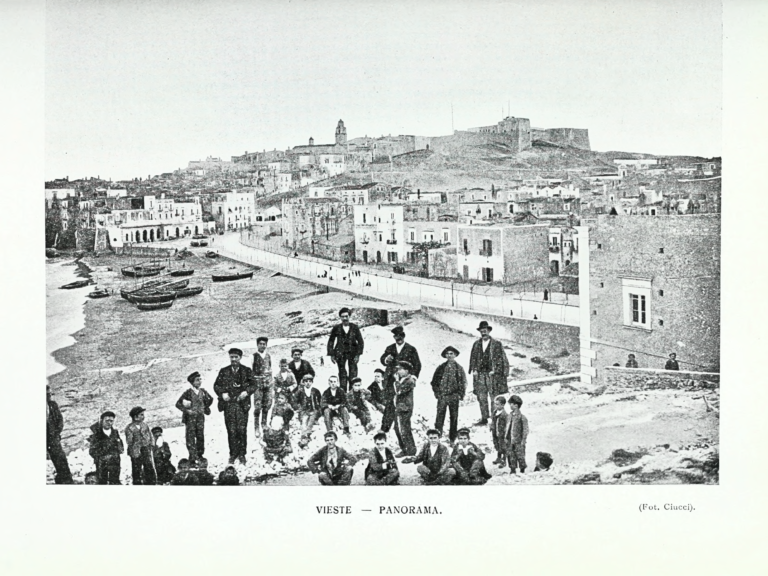 The landscape and the sea
The landscape and the sea
I will never be able to forget this cool morning on the rocks. Down and down, up to the Torre del Ponte, the Spiaggia del Castello extends, a very gentle arc of the sea that slowly rises between almost golden sands in a vast fruitful basin full of blocks of flats. From my high point, I see the men wandering about the arenas, like black dots, little ants with exhausted activity. To the east, the rock of Portonuovo shines white, further on the Testa del Gargano pushes into the sea, like a mighty gray mass.
A few steps away from me is a girl stretching out clothes in the sun; she looks at me with insistent curiosity; a woman further away, her mother perhaps, calls me to ask which way I come from and what am I looking for up there.I lean from the rocks to look; the height is dizzying ; the mountain descends sheer to the deep whirlpool, sinks into the waters that a strong current never leaves calm; their quivering, their bellowing is heard. The two washerwomen tell me how the sea has formed a large nest under the mountain and how, on stormy nights, the ominous roar of the waves can be heard from every house.
I remain alone for a long time in this divine solitude to watch, to listen; the landscape is new and strange, above all strange for the colors which form an unforgettable harmonious contrast. The reefs, the rocks are of the clearest white imaginable and they shine softly in this sun without offending the eyes; furthermore the sea, with its dark and deep blue, the sea that frames them all and surrounds them in its immensity, blurs their harshness, attenuates them in a soft range of blues.
And Gargano, so full of sudden contrasts, of superb visions, has one of its best points here.
These rocks look like fabulous palaces of the purest marble, created by lunar spells in some remote legendary age; rough but beautiful buildings. The force of the moment suddenly drew them out of nowhere by the gods of the sea, by the alluring sirens who led so many paranzellas, so many ships and tartans to shipwreck at this marvel.
In the deep whirlpool, between the seaweed and the rocks, lie broken antennas, curved hulls, broad hulls of ships; they lie and will lie until their last consummation; great dark skeletons of the eternal tragedy of the sea, while from their foot the candid rock takes flight to smile all beautiful, all white in the free gaiety of the sun and the air. Fabulous mansions of beauty and mystery that the fiery heart of the earth wanted so beautiful for its creatures, for the eyes of its creatures who know how to enjoy. I see them stand out in their uncomposed and harmonious lines, I see them expand, relax, and I feel their millennial life made of light and silence. There is a larger one among the others; at the base, a large inlet seems to form the threshold of an invisible door, the waters tremble around it, the sun radiates it; perhaps that is the threshold on which the sirens linger when the moon holds them by enchantment.
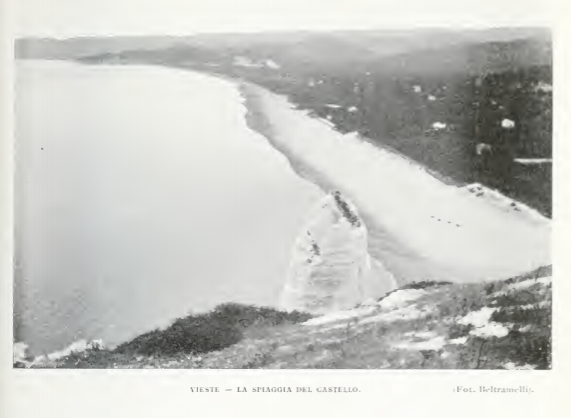
The legend of Pizzomunno
And there are those down here who still believe in sirens, there are those who believe in the poetry of its sea.
A fisherman whom I meet among these rocks tells me this sweet legend: "Once upon a time there lived in Vieste a girl the likes of which had never been seen before; her beauty surpassed the sun, she was like the eye of the Lord; the jealous sirens and one day when she went alone waiting for her friend, kidnapped her.
Now she lives at the bottom of the sea, chained to the rocks. Her friend cries eternally and sighs for her and waits for her on the beach. Once every hundred years, the sirens are moved and the lovers can have a day of love, but towards evening, when, deluded by their freedom, they are about to leave, the sirens pull the chain to which the girl is bound and she falls back into the sea and for another hundred years the cry of the beloved, similar to the moaning of the waves, runs the storm and the serene.And again: it was from these rocks that Ettore Fieramosca launched himself with his horse into the sea.
The old fisherman tells me the name they give in the country to certain small flowers which grow very numerous among these rocks; they call them « arruska »; this word of Arabic origin means bride, I am
daffodils and, at the top of the rocks, they form large garlands of gold, purple and pink.I collect three according to the gentle guide:
"Take three, my lordship, it's our custom: one for friendship,
one for luck and one for love.
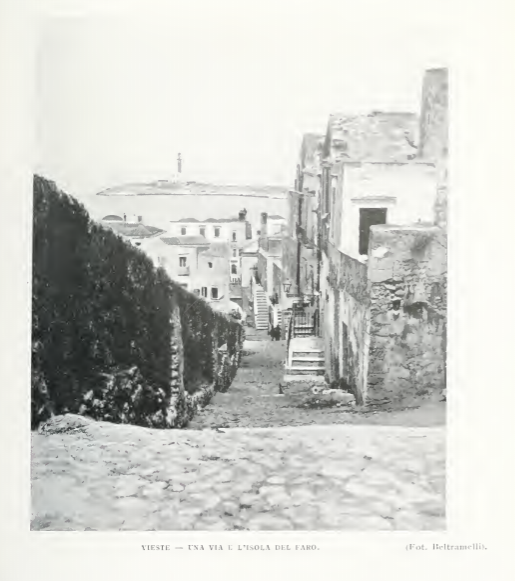
The Castle
The castle which, seen from the east, looks like a cyclopean construction, rises at the highest point and dominates the whole city which descends sloping down on one side to the peninsula where the church of San Francesco stands; on the other up to the Torre San Felice. It is an inlet closed, in part, by the rock on which the lighthouse stands.
From up here the ancient walls start, which gathered the whole city in their enclosure. On the north side, on top of a sandy hill with a difficult route, opens the completely preserved ancient gate of the castle. I don't know which side to climb, the undertaking is not easy; the normal point of support is missing from the feet, then these sands are burning like fire. Finally I succeed in conquering the not arduous peak and I become the object of curiosity on the part of numerous women who peek at me, question me, want to know a thousand things, almost as if I were entering their house or a marauding Turk. But, as a young man explains to me, nobody ever comes up here and a new man is always fun!The interior of the castle is partly inhabited. A mound of filthy houses welcomes a crowd of even dirtier women and children. Between these houses there are coves and
some very narrow alleys descend to the lower part of the city in which the stench is truly unbearable. I walk along one that leads into other alleys full of stairs, caves, balconies; from time to time from a small arch, from an open window you can glimpse the sea.The houses that are piled up in a short space descend on the rocks and continue as far as the point of San Francesco where the last church stands. Every little space is occupied; there are houses which continue the line of the rock that falls sheer to the sea.
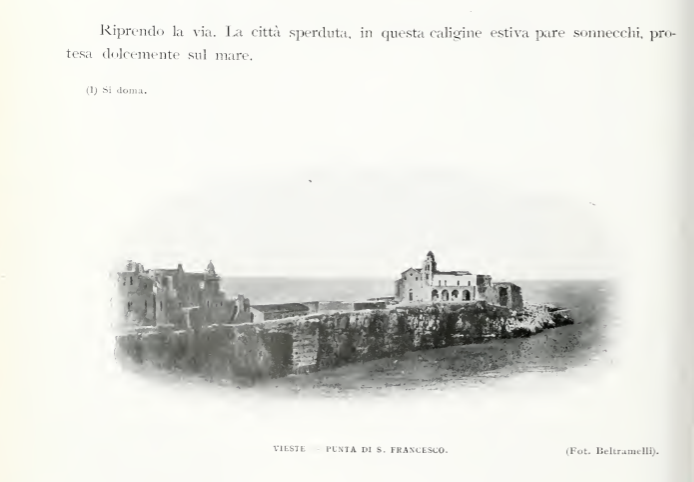
The toasts
my guest, taking away the only one
glass that served everyone, toast to our health :This wine is good and gallant
Cheers to all of you!Toast that does not equal, for originality, the other that fell to Mrs. Janet Ross
The strength of man is ingenuity
And with ingenuity every horse tames itself,
S'aduma tiger, alpha, lion;
Then the women are educated with the breath of the man,
Then they began to make young children there;
I make a toast to all the gentlemen
And I drink the wines.I resume the road. The lost city, in this summer haze, seems to be dozing, stretched out gently on the sea
Santa Maria de Merino
THE CITY OF GARDENS
We cross real woods of olive trees; there are centuries-old trees that spread out theirs
copper for a very large circuit; here and there some fruitful vineyards, some fields cultivated with wheat. Pulputulo, after advising me to sleep, dozes off on his behalf. Our mule dances a desperate tarantella in the dust. We pass the "pasquarello" where teams of reapers, supervised by a man on horseback, are intent on work.
The gleaners follow in the distance all dressed in white. Further on you discover the Scialmarino Beach, where Santa Maria di Merino stands on a pleasant hill, an ancient hermitage around which you can still see the ruins of an ancient city that it is believed was Merino.
The origins
THE LOST.
The origins of Vieste - or Viesti as some call it although the ancient ending in e, persists in the Gargano - are lost, like those of Rhodes and other cities
of the promontory, in legend and in myth. To the fabulous hero Diomede and his people, its foundation is attributed in an indefinable period; or rather, shortly after the
Trojan War around 1 1 84 BC C. No escort can seriously support the investigation in such remote times; it is best therefore, to start from the point where the
history can be a valid guide.Some historians, including Giuliani, maintain that the name of Vieste is a corruption of Apeneste, an ancient city which rose, according to their conjectures, in the place
where the modern city rises; others believe that Vieste derives its name from an ancient temple that once stood in its surroundings, sacred to the goddess Vesta.Vieste makes itself alive particularly in history for its misfortunes; she was persecuted by men and by the elements.
In times of proud papal struggles. Celestine V was arrested in Vieste by order of Bonifacio VII.
In 1554 Turkish corsairs attacked and took the city. Due to the resistance opposed to them by the spirited inhabitants, the bestial cruelty, the principal dowry of the people, which has remained all day at the intellectual and civil level of that time, was carried out in a memorable slaughter. Seven thousand people were put to the sword, regardless of sex or age; another seven thousand were taken captive. When the victorious galleys set sail again, the lost city remained almost deserted.
As if this were not enough, not many years later and more precisely on May 21, 1646, an earthquake shook the city to its foundations and caused it to be undermined in large part. There were numerous victims. We have no particular narratives of these mournful disasters.
In 1674 the Turks returned to the assault and repeated their deeds of marauders in 1678, killing and enslaving the citizens. Among all the cities of the Gargano, that
which suffered the most from the raids of the Turks was Vieste; he resented it for a long time.In the XNUMXth century it was given as a fief to Captain Consalvo of Cordova, who then sold his rights to Mendoza.
Charles V aggregated it to the State Property.
One of the very few carriage roads that cross the Gargano ends in Vieste; beyond the lost city, to walk along the promontory from the east side,
all that remains are paths and mule tracks — one returns to the wild state.
Transcript by Diego Romano, turismovieste.it

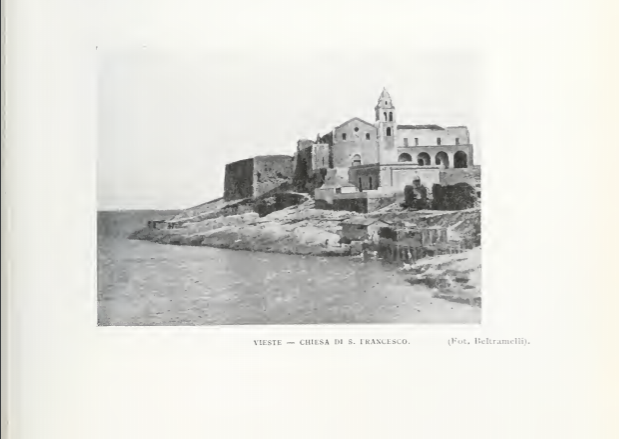
 Turismovieste.it is created by
Turismovieste.it is created by 
